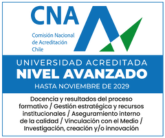A model is developed for a foam fractionation process, supposing that bubble size increases moving up the foam column. Predictions are obtained for liquid flux through the foam column, liquid fraction at the top and enrichment of surface actives within the foamate. Compared to previous models with fixed bubble size, fractionation performance is shown to be improved. A synergy is revealed between the effect of the foam becoming drier (and hence richer in surface actives) as the foam column becomes taller, and the effect of bubble size increasing moving upwards (which makes the foam even drier and hence richer still). A dimensionless parameter m quantifies the relative variation in bubble size between top and bottom for a foam column of typical height. Even small m values lead to behaviour qualitatively different from a system with no bubble size variation whatsoever, whilst increasing m leads to even better fractionation performance.



